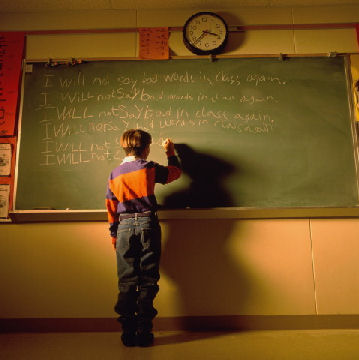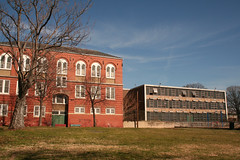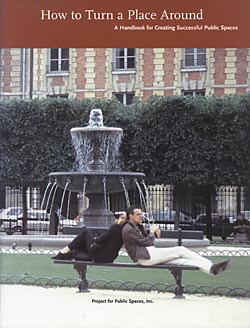I fear another blown opportunity to improve neighborhoods and to do neighborhood planning

Today's Post has this article, "12 Schools Open to Mergers, Janey Says," about DC's school closing discussion. The article is troubling for (at least) three reasons:
(1) There are plenty of opportunities for neighborhoods to improve;
(2) the city lacks true and comprehensive neighborhood-based land use and resource plans;
(3) ad-hoc planning of school closures and mergers by school principals is not likely to push forward overarching neighborhood improvement initiatives.
For example, the article mentions a Webb teacher saying that there school could be overwhelmed by 110 students (5 classrooms!) from Wheatley. Or someone else mentioned that the Ludlow-Taylor principal (236 students in a school capable of probably 600 or more) is negotiating with a special needs program serving 110 children.
Yet in the context of broader-based planning initiatives, letting 1,000 flowers bloom, cacophonious planning makes no sense.
1. In the 1950s through the 1970s, DC Public Schools built cheap ugly buildings, often tearing down what today would be considered historic residential building stock as well as school buildings to do so, and/or deaccessioning perfectly usable historic buildings.
2. Many neighborhoods lack other amenities such as park and green spaces.
3. Providing public services such as recreation, library, community education, and other services should be coordinated and ideally cross-use the same facilities in order to maximize return on investment.
If I were creating criteria to shape the school "rightsizing" process, I would be looking to (1) close buildings that are ugly and (2) that have opportunities for quality redevelopment and or providing other desirable community amenities.
For example, either Ludlow-Taylor or JO Wilson (two blocks apart) could close. L-T is from the 1970s, JO Wilson from the 1950s. North of H Street and south of Florida Avenue there are no public green spaces, other than the playground at JO Wilson, which could be more broadly used as a public greenspace.
Wheatley Elementary is a historic school building, and huge. Because of its historicity, redevelopment opportunities are restricted. Plus, its large size might suggest keeping the building as a public school to provide upside potential for being able to respond to possible student enrollment increases. Webb is an ugly "modern" school building located on Mt. Olivet Road at a location that has more redevelopment options. (Unless people are clamoring for Wheatley to be converted into condominiums...)
 See the difference... old and "new" construction at Wheatley Elementary School, Trinidad, Washington, DC. Photo by Inked78.
See the difference... old and "new" construction at Wheatley Elementary School, Trinidad, Washington, DC. Photo by Inked78.In neither case should these decisions be left up to the school board or to a few teachers or a couple school principals without a real neighborhood-based public process to wrestle through these issues.
This comes back to my criticism that DC doesn't have an Office of Planning, we have an Office of Land Use, and most of the planning initiatives of other DC Government agencies, in particular the DC Public Library System, the DC Parks and Recreation system, and the DC Public Schools "Master Education Plan" process as well as the School Facilities Closure process are separate processes, and certainly appear to be disconnected for the most part from overall "Comprehensive Planning" such as encapsulated by the ongoing Comprehensive Plan revision process.
We need a real Office of Planning that coordinates all of the city's government-based planning initiatives, and real neighborhood-based planning systems as well.
Getting back to schools planning for a minute, a friend of mine wrote me in response to the blog entry "Straight talk on "self-help" in neighborhood revitalization" and she said:
After I read your blog, I signed up as a volunteer to plant cherry trees at Adams Elementary School last Saturday! I had a GREAT time -- the principal of the school is a real visionary, too. You may want to interview him -- he is truly committed to blurring the boundaries between school and community, in very creative ways.
And I wrote in turn:
As far as schools go, I think that every school in the city should do the Project for Public Spaces "How to turn a place around" workshop at the school focusing on the community within a couple block radius of the campus, as a way to build a community-eyes on the street-engaging nearby neighbors into helping "secure" the perimeter in the hours that school's not open. Plus, these are park-like spaces that the community should be able to use, and assets that the community should be able to access in order to "build its capacity to learn and grow," and create a true "city of learning," school libraries should be sited within schools, so that they can be used off hours by residents, perhaps by having separate entrances that can be open when school isn't, etc.

I tried to get JO Wilson to do the HTTPA workshop but the community group is stuck in "charismatic leadership" from the 1980s (see Social Psychology of Organizations by Katz and Kahn)... Quite frustrating.
______
Also see "School closure picture sharpens," from today's Examiner. From the article (which doesn't list the complete list of 8 schools!!!!!!!!!!!!!!!!!!!!):
An analysis of D.C. Public Schools budget figures released this week gives some clue into which schools Superintendent Clifford Janey is considering closing or consolidating this fall. Eight elementary schools — all in Southeast and Northeast — which were listed separately in the budget figures released March 3 are now shown with consolidated budgets, according to figures released Wednesday. The enrollment figures for the schools are also combined in the most recent report...And some schools, including Van Ness Elementary in Southeast, no longer have budgets, according to the budget documents.
Index Keywords: education



0 Comments:
Post a Comment
<< Home